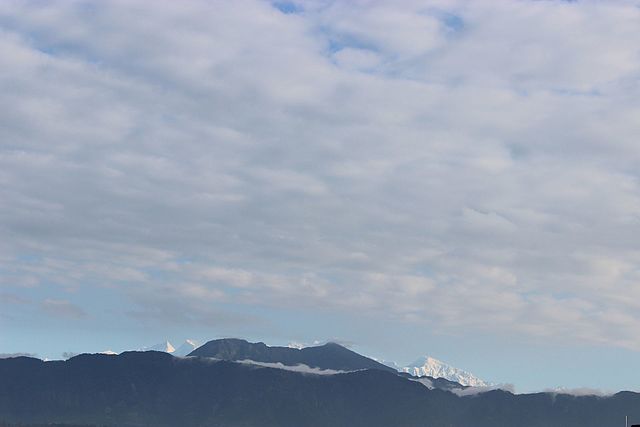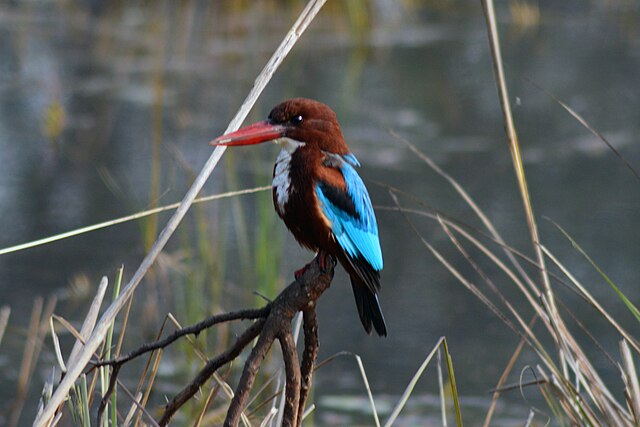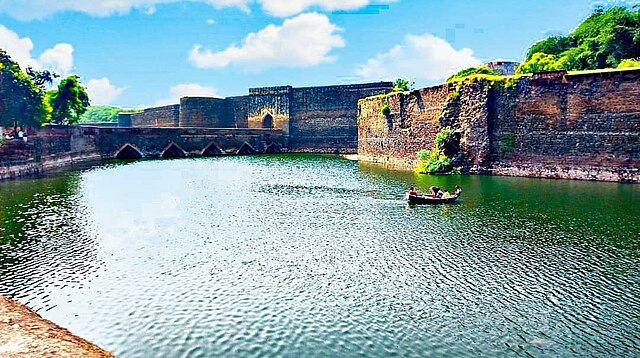Ever wondered what it’s like to experience the weather in Bharatpur, Rajasthan? This vibrant city, known for its rich history and the world-famous Keoladeo National Park, has a climate as dynamic as its cultural heritage. Whether you’re planning a trip to explore its bird sanctuaries or just curious about what the weather holds, understanding Bharatpur’s climate is key to making the most of your time here. In this guide, I’ll walk you through everything you need to know about Bharatpur’s weather—season by season, month by month, with practical tips to help you prepare. Let’s dive into the heart of this desert city’s climate!
Why Bharatpur’s Weather Matters
Bharatpur’s weather isn’t just small talk—it’s a major player in how you experience this city. Nestled in Rajasthan, Bharatpur sits at about 176 meters above sea level, and its climate is a classic semi-arid type, with scorching summers, chilly winters, and a monsoon season that brings life to the region. Knowing what to expect can make or break your visit. Are you ready to explore a city where temperatures can swing from a toasty 43°C in summer to a crisp 6°C in winter? Let’s break it down.
The Semi-Arid Climate of Bharatpur
Bharatpur’s semi-arid climate is like a rollercoaster ride—full of ups and downs. The city experiences distinct seasons: a blazing hot summer, a wet and humid monsoon, and a cool, dry winter. This climate shapes everything from daily life to the migratory patterns of birds at Keoladeo National Park. The temperature swings and seasonal shifts create a unique rhythm, and understanding this can help you plan your visit or even just appreciate the city’s unique vibe.
Summer in Bharatpur: The Heat is On
Summer in Bharatpur, from March to June, is like stepping into an oven. Daytime temperatures often climb to 40-43°C, with peaks sometimes hitting 45°C in May, the hottest month. The air is dry, and the sun feels relentless, like a spotlight that never dims. If you’re visiting during this time, staying hydrated and seeking shade are non-negotiable. But don’t let the heat scare you off—summer has its own charm, with fewer crowds and vibrant local festivals.
Tips for Surviving Bharatpur’s Summer

Think of summer in Bharatpur as a test of endurance. To beat the heat, pack lightweight, breathable clothing—cotton is your best friend. Carry a water bottle everywhere, and don’t underestimate the power of a wide-brimmed hat or umbrella for shade. Early mornings and late evenings are your golden hours for exploring, as the temperatures dip slightly. Indoor attractions like the Bharatpur Government Museum or local eateries offer a cool escape during the midday blaze.
Air Quality in Summer
The dry summer air can stir up dust, which might affect air quality, especially for sensitive groups like asthmatics. On average, air quality in Bharatpur during summer can be unhealthy for these groups, with dust particles contributing to irritation. If you’re sensitive to dust, consider wearing a mask or limiting outdoor activities during windy days. Checking real-time air quality updates before heading out is a smart move.
Monsoon Magic: Bharatpur’s Rainy Season
Come July, the monsoon rolls into Bharatpur like a long-awaited guest, bringing relief from the summer heat. From July to September, the city sees moderate to heavy rainfall, with August being the wettest month. Expect about 600-700 mm of rain over the season, transforming the dry landscape into a lush, green paradise. The temperatures drop to a more comfortable 25-35°C, but humidity spikes, making it feel sticky. Ever seen a desert bloom? This is your chance.
Why Monsoon is Special in Bharatpur
The monsoon isn’t just about rain—it’s a lifeline for Bharatpur. The wetlands of Keoladeo National Park come alive, attracting thousands of migratory birds from across the globe. If you’re a nature lover, this is the time to visit, armed with a raincoat and binoculars. The rain also cools the air, making outdoor exploration more pleasant, though you’ll need to dodge occasional downpours. It’s like nature’s way of hitting the refresh button.
Monsoon Travel Tips
Visiting Bharatpur during the monsoon? Pack waterproof shoes and quick-dry clothing. Roads can get muddy, especially around rural areas or the national park, so plan your routes carefully. A lightweight umbrella is handy, but don’t shy away from embracing the rain—it’s part of the experience! Check weather forecasts for sudden heavy showers, and always have a backup plan for indoor activities if the skies open up.
Winter Wonders: Bharatpur’s Cool Season

Winter, from November to February, is Bharatpur’s sweet spot. The temperatures range from a chilly 6°C at night to a pleasant 25°C during the day, with December and January being the coldest months. The air is crisp, the skies are clear, and the city feels like it’s taking a deep breath after the monsoon’s humidity. It’s the perfect time to explore Bharatpur’s forts, palaces, and bird sanctuaries without breaking a sweat.
Why Winter is the Best Time to Visit
Winter in Bharatpur is like a warm hug on a cool day. The mild weather makes it ideal for sightseeing, whether you’re strolling through the Lohagarh Fort or cycling through Keoladeo National Park. The clear skies also mean better visibility for birdwatching, with species like Siberian cranes and bar-headed geese flocking to the park. Plus, the winter light casts a golden glow over the city’s historic sites, making every photo Instagram-worthy.
Winter Packing Essentials
Packing for Bharatpur’s winter is all about layers. Mornings and evenings can be chilly, so a light jacket or sweater is a must. During the day, you’ll be comfortable in long sleeves or light clothing. Don’t forget sunscreen—Rajasthan’s winter sun can still pack a punch. If you’re visiting the national park, sturdy shoes and binoculars will elevate your experience. Think of it as gearing up for a cozy adventure!
Month-by-Month Weather Breakdown
Want a quick snapshot of Bharatpur’s weather throughout the year? Here’s a month-by-month guide to help you plan:
- January: Cold mornings (6-10°C), warm days (20-25°C), clear skies, perfect for birdwatching.
- February: Slightly warmer (8-27°C), dry, ideal for outdoor activities.
- March: Spring-like (12-32°C), warming up, great for early morning tours.
- April: Hot (20-38°C), dry, fewer crowds, good for indoor attractions.
- May: Scorching (25-43°C), peak summer, stay hydrated and avoid midday sun.
- June: Very hot (28-42°C), pre-monsoon humidity, plan indoor activities.
- July: Monsoon begins (25-35°C), moderate rain, lush greenery emerges.
- August: Peak monsoon (24-33°C), heavy rain, best for nature lovers.
- September: Monsoon fades (23-34°C), humid, good for park visits.
- October: Post-monsoon (20-35°C), pleasant, ideal for sightseeing.
- November: Cool (12-30°C), dry, excellent for all outdoor activities.
- December: Chilly (6-25°C), clear skies, festive vibe in the air.
Keoladeo National Park: Weather’s Impact on Wildlife
Bharatpur’s weather doesn’t just affect humans—it’s a game-changer for the wildlife at Keoladeo National Park, a UNESCO World Heritage Site. The monsoon floods a the park’s wetlands, creating a haven for migratory birds. Winter brings clearer skies and cooler temperatures, making it easier to spot rare species. Summer, while harsh, sees resident birds adapting to the heat. Visiting the park? The weather will dictate what you see, so plan your trip around the season that suits your wildlife goals.
Best Seasons for Birdwatching
If birds are your thing, winter (November to February) and early monsoon (July to August) are prime times. Winter brings migratory birds like the Siberian crane, while the monsoon attracts waterfowl and breeding species. Imagine cycling through the park as herons and egrets swoop overhead—it’s like stepping into a nature documentary. Always check weather forecasts before your visit, as sudden rain or fog can affect visibility.
Weather and Local Culture
Bharatpur’s weather shapes its culture in fascinating ways. Festivals like Holi in March thrive in the mild spring weather, while monsoon brings vibrant celebrations tied to the rains. Winter is peak season for fairs and local markets, where you can soak up the city’s heritage under clear skies. The weather isn’t just a backdrop—it’s part of the rhythm of life here, like a soundtrack to Bharatpur’s story.
Festivals and Weather Planning
Planning to catch a festival? Check the weather first. Holi’s colorful chaos is best enjoyed in March’s mild temperatures, while winter festivals like the Brij Festival (February) are perfect under cool, clear skies. Monsoon festivals, though fewer, often celebrate the rains with music and dance. Pack accordingly, and don’t let a sudden shower dampen your spirits—embrace the vibe!
How to Prepare for Bharatpur’s Weather

No matter the season, preparation is key in Bharatpur. Always check a reliable weather forecast before your trip—sites like AccuWeather or the India Meteorological Department are great starting points. Pack versatile clothing to handle temperature swings, and keep an eye on air quality if you’re sensitive to dust or pollution. Whether you’re chasing birds or history, a little planning goes a long way in this desert gem.
Tech Tools for Weather Updates
In 2025, staying ahead of Bharatpur’s weather is easier than ever. Apps like AccuWeather or Weather Underground offer real-time updates, while local sources like the India Meteorological Department provide detailed forecasts. Want to know if a monsoon shower will hit during your park visit? These tools have you covered, delivering hourly updates and air quality insights right to your phone.
Climate Change and Bharatpur’s Future
Let’s talk about the elephant in the room: climate change. Bharatpur’s weather is feeling the impact, with hotter summers, erratic monsoons, and shifting bird migration patterns. The wetlands of Keoladeo National Park are particularly vulnerable, as changing rainfall patterns affect water levels. Locals are adapting, but it’s a reminder to travel responsibly—support eco-friendly initiatives and minimize your footprint to help preserve this incredible region.
Conclusion
Bharatpur’s weather is as diverse and captivating as the city itself. From the scorching summer heat to the refreshing monsoon rains and crisp winter days, each season offers a unique lens through which to experience this Rajasthani gem. Whether you’re a birdwatcher, history buff, or festival enthusiast, understanding the climate will help you plan a trip that’s both enjoyable and memorable. So, pack your bags, check the forecast, and get ready to explore Bharatpur’s vibrant seasons. What are you waiting for? The city’s calling, and its weather is ready to tell you its story.
Frequently Asked Questions (FAQs)
1. What is the best time to visit Bharatpur for birdwatching?
The best time for birdwatching in Bharatpur is winter (November to February) when migratory birds flock to Keoladeo National Park, and the weather is cool and pleasant.
2. How hot does it get in Bharatpur during summer?
Summer temperatures in Bharatpur can soar to 40-43°C, with May being the hottest month, sometimes reaching 45°C. Stay hydrated and avoid midday outdoor activities.
3. Does Bharatpur experience heavy rainfall during the monsoon?
Yes, Bharatpur receives moderate to heavy rainfall (600-700 mm) from July to September, with August being the wettest month, transforming the region into a lush, green landscape.
4. Is air quality a concern in Bharatpur?
Air quality can be an issue in summer due to dust, especially for sensitive groups. Check real-time air quality updates and consider masks if you’re prone to respiratory issues.
5. What should I pack for a winter trip to Bharatpur?
For winter, pack layers like light jackets, sweaters, and long sleeves. Sturdy shoes and sunscreen are also essential, as the winter sun can still be strong.
